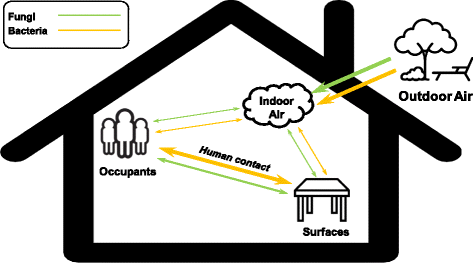Quick post here — prepping for #MoBE17 meeting and found this new paper. It seems like it is worth a look:
City-scale distribution and dispersal routes of mycobiome in residences: Microbiome. 2017 Oct 4;5(1):131. doi: 10.1186/s40168-017-0346-7.
Abstract
BACKGROUND:
Pathogenic and allergenic bacteria and fungi within the indoors can bring detrimental health effects on the occupants. We previously studied the bacterial communities found in households located throughout Hong Kong as well as the skin surfaces of the occupants. As a complementary study, here, we investigated the fungal communities (mycobiome) in the same residences and occupants and identified factors that are important in shaping their diversity, composition, distribution, and dispersal patterns.
RESULTS:
We observed that common skin and environmental fungal taxa dominated air, surface, and skin samples. Individual and touch frequency strongly and respectively shaped the fungal community structure on occupant skin and residential surfaces. Cross-domain analysis revealed positive correlations between bacterial and fungal community diversity and composition, especially for skin samples. SourceTracker prediction suggested that some fungi can be transferred bidirectionally between surfaces and skin sites, but bacteria showed a stronger dispersal potential. In addition, we detected a modest but significant association between indoor airborne bacterial composition and geographic distance on a city-wide scale, a pattern not observed for fungi. However, the distance-decay effects were more pronounced at shorter local scale for both communities, and airflow might play a prominent role in driving the spatial variation of the indoorairborne mycobiome.
CONCLUSIONS:
Our study suggests that occupants exert a weaker influence on surface fungal communities compared to bacterial communities, and local environmental factors, including air currents, appear to be stronger determinants of indoor airborne mycobiome than ventilation strategy, human occupancy, and room type.

